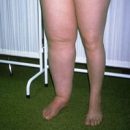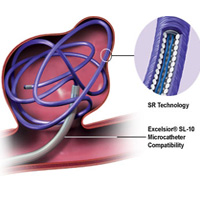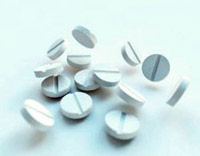You have pain, feeling of fatigue and discomfort in the legs when walking or there are cramps in the calf muscles, the weakness of the legs? Perhaps this is oblitering atherosclerosis. Read what it is in this article.
Content
What is obliterated atherosclerosis
Obricultural atherosclerosis of the main vessels of the lower limbs is in the first place among other diseases of the arteries.
 Supported atherosclerosis of the lower extremities, plaque. Having affecting mostly men older than 40 years old, he often causes severe blood circulation of the limbs, obrives patients with painful suffering and deprives. The process is localized mainly in large vessels (aorta, iliac artery) or middle caliber arteries (femoral, popliteal).
Supported atherosclerosis of the lower extremities, plaque. Having affecting mostly men older than 40 years old, he often causes severe blood circulation of the limbs, obrives patients with painful suffering and deprives. The process is localized mainly in large vessels (aorta, iliac artery) or middle caliber arteries (femoral, popliteal).
Atherosclerotic arterial lesions are a manifestation of general atherosclerosis. The main changes in atherosclerosis are developing in the intima (inner shell) arteries. Here, cholesterol and fat inclusions (lipids) are beginning to be postponed - forming yellowish stains on the inner wall of the vessel. In the circumference of these foci, a young connective tissue appears, the ripening of which leads to the formation of a sclerotic plaque. On plaques there are platelets and bunches of fibrin, calcium salts. With abundant accumulation of lipids and calcium, there is a breakdown of blood circulation in plaques, which causes the appearance of ather cavities filled with disintegrating masses. The wall of the artery in the area of such a plaque has a stone hardness, it will easily crumble.
Krink-like masses are brazed into the clearance of the vessel. Finding with blood current into the underlying blood vessels, pieces of an unfolded atherosclerotic plaques can cause blockage (embolism) and lead to thrombosis of the arteries of limbs with the development of gangrenes (death). In addition, the narrowing of the vessel is a large plaque leads to a significant impaired of the current of blood, which reduces the delivery of oxygen in the tissue. With physical load of the muscles that do not receive sufficient food refuse to work, pain occurs, which disappears only after rest. A large plaque contributes to the development of blood cloth at the site of the narrowing of the vessel, which can lead to acute insufficiency of the blood supply to limb and gangrene.
Manifestation of oblicing atherosclerosis
Over the course of several years, oblicing atherosclerosis of the lower extremities may be asymptomatic, but since the first clinical manifestation often progresses. In some cases, due to the attached thrombosis, clinical manifestations of the disease arise suddenly.
 The main symptom of oblumbrium atherosclerosis of the lower extremities is the intermittent chromotype, manifested by pain in the calf muscles, which appear when walking and disappear after short-term recreation. With atherosclerotic lesions of the abdominal aorta and the iliac artery (Lerish syndrome), pain is localized not only in the legs, but also in the bridge muscles, lumbar and muscles of the thighs. Interpretated chromotypes enhanced when lifting the stairs or uphill. Majority, increased sensitivity of the lower extremities to cold, sometimes a sense of numbness in the footsteps. Due to the color of the skin of the legs, which in the initial stages of the disease become pale, have in patients with Lerish bone syndrome.
The main symptom of oblumbrium atherosclerosis of the lower extremities is the intermittent chromotype, manifested by pain in the calf muscles, which appear when walking and disappear after short-term recreation. With atherosclerotic lesions of the abdominal aorta and the iliac artery (Lerish syndrome), pain is localized not only in the legs, but also in the bridge muscles, lumbar and muscles of the thighs. Interpretated chromotypes enhanced when lifting the stairs or uphill. Majority, increased sensitivity of the lower extremities to cold, sometimes a sense of numbness in the footsteps. Due to the color of the skin of the legs, which in the initial stages of the disease become pale, have in patients with Lerish bone syndrome.
In later stages, the skin of the feet and fingers acquires the bugvo blue painting (trophic violations). The development of trophic disorders leads to hair loss, nail growth impairment. When blocking (occlusion) of the femoral-patent segment, the overeximation is usually absent on the legs, with the damage to the aorto-ileal region, the bald zone is distributed on a distal third of the hips. One of the manifestations of atherosclerosis of the aorto-ileal segment is impotence due to circulatory impairment in the system of internal ileum arteries. The specified symptom occurs in 50% of patients.
Significant information about the nature of the pathological process is given to prove the foot vessels. With obliterating atherosclerosis of the lower extremities, the femoral-popliteal segment is most often affected, therefore, starting from the place of the removal of the deep artery of the thigh, the pulsation in the overwhelming majority of patients is not determined by either a patery artery or on the arteries of the stop.
Signs of threatening gangrenes limbs and its first signs (fingertips, stope ulcers). Constant pain in peace, requiring anesthesia for 2 weeks and more, trophic ulcer or gangrene of fingers or feet, arising against the background of chronic arterial deficiency of the lower, limbs are a sign of critical limb ischemia. In the title of this state, the crisis is mentioned. If you do not take steps to improve arterial blood supply, amputation becomes inevitable in the absolute majority of patients. And often not a doctor persuades the patient for amputation, but on the contrary, the patient, angry with pain and insomnia, begging the surgeon to take a sore leg.









